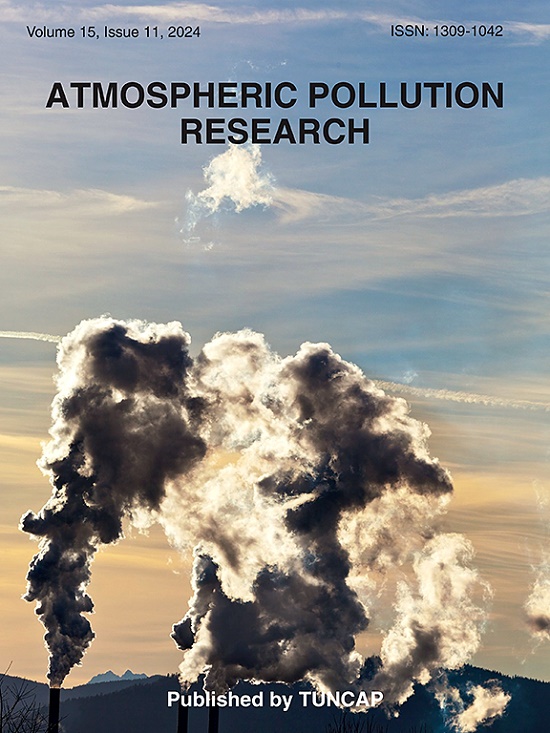Evaluating the effects of meteorology and emission changes on ozone in different regions over China based on machine learning
IF 3.9
3区 环境科学与生态学
Q2 ENVIRONMENTAL SCIENCES
引用次数: 0
Abstract
Systematically understanding the impact of meteorological conditions on regional ozone pollution helps to retrieve ozone dataset and evaluate emission changes on ozone variation. Here, more air-quality observation sites were collected, and Random Forest algorithm was applied to retrieve daily maximum 8 h average (MDA8) O3 concentrations at 1 km resolution in 2019–2020 in China. The region-season model and whole-retrieved model were established to compare the contributions of meteorological variables to ozone variations on spatiotemporal scale. The former model outperformed the latter for retrieval capability, but the predictive ability of the latter was slight stronger. This may be associated with the spatiotemporal heterogeneity of meteorological influence. Daily ozone variability in China was mainly influenced by meteorology, especially in North China Plain in autumn. The key factors were temperature, ultraviolet radiation and relative humidity over the whole country, but varied significantly in different regions and seasons. The effects of meteorology and emission sources on ozone were separated by weather normalization technique. Meteorological conditions were particularly favorable for increasing ozone concentrations in spring, but particularly unfavorable in winter. During the COVID-19 lockdown, the increases in ozone in spring and winter of 2020 were the contribution of the combination of meteorology and emissions; while the decreases in ozone in summer and autumn of 2020 were mainly due to the changes of emission sources, although meteorological conditions were unfavorable to ozone mitigation in heavily polluted areas. Our findings provide scientific basis for the prevention and control of ozone pollution for the regional scale in China.

基于机器学习的气象和排放变化对中国不同区域臭氧的影响评估
系统地了解气象条件对区域臭氧污染的影响有助于检索臭氧数据集和评估臭氧排放变化对臭氧变化的影响。利用随机森林(Random Forest)算法反演2019-2020年中国1 km分辨率最大8 h平均值(MDA8) O3浓度。建立了区域-季节模式和全反演模式,比较了各气象变量对臭氧时空变化的贡献。前者在检索能力上优于后者,但后者的预测能力略强。这可能与气象影响的时空异质性有关。中国臭氧日变化主要受气象影响,特别是华北平原秋季。在全国范围内,温度、紫外线辐射和相对湿度是主要影响因子,但在不同地区和季节差异显著。利用气象归一化技术分离了气象和排放源对臭氧的影响。气象条件在春季对臭氧浓度的增加特别有利,而在冬季则特别不利。在2019冠状病毒病封锁期间,2020年春季和冬季臭氧的增加是气象和排放共同作用的结果;而2020年夏秋季臭氧的减少主要是由于排放源的变化,尽管气象条件不利于重污染地区的臭氧缓解。研究结果为中国区域尺度的臭氧污染防治提供了科学依据。
本文章由计算机程序翻译,如有差异,请以英文原文为准。
求助全文
约1分钟内获得全文
求助全文
来源期刊

Atmospheric Pollution Research
ENVIRONMENTAL SCIENCES-
CiteScore
8.30
自引率
6.70%
发文量
256
审稿时长
36 days
期刊介绍:
Atmospheric Pollution Research (APR) is an international journal designed for the publication of articles on air pollution. Papers should present novel experimental results, theory and modeling of air pollution on local, regional, or global scales. Areas covered are research on inorganic, organic, and persistent organic air pollutants, air quality monitoring, air quality management, atmospheric dispersion and transport, air-surface (soil, water, and vegetation) exchange of pollutants, dry and wet deposition, indoor air quality, exposure assessment, health effects, satellite measurements, natural emissions, atmospheric chemistry, greenhouse gases, and effects on climate change.
 求助内容:
求助内容: 应助结果提醒方式:
应助结果提醒方式:


